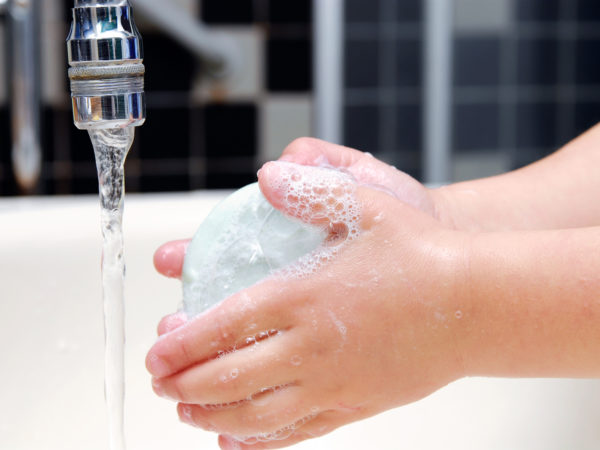What Cleans Hands Best?
What do you think of hand sanitizers as a substitute for soap and water for cleaning and disinfecting dirty hands? Can they really prevent colds and flu?
Andrew Weil, M.D. | September 15, 2015

Originally published on June 2006. Updated on February 24, 2015.
Most of us carry up to 10 million microbes on our hands at any given time. We contract most colds, flu and other illnesses via hand-to-mouth or hand-to-eyes transmission: our hands come in contact with objects that have been touched by someone with a cold or flu and pick up the bugs that caused it. For this reason, it’s very important to keep your hands clean.
If your hands are visibly dirty, soap and water are best for cleansing. Sanitizing gels aren’t as effective for removing dirt, food or anything else that you can see on your hands. And new evidence from New Zealand suggests that hand sanitizers don’t help prevent transmission of cold and flu germs among schoolchildren. At the outset of the study, all the young students at 68 primary schools were given a half-hour hygiene lesson. Half the schools acted as a control group – the kids washed their hands with only soap and water while those in the other group did the same but also used hand sanitizers when they coughed or sneezed and before meals.
When youngsters were absent from school, the researchers phoned their homes to find out if they were sick and, if so, kept track of the type and lengths of their illnesses.
The result of all this training and monitoring was finding that the use of hand sanitizers didn’t appear to protect the kids from colds and flu; absentee rates throughout the 20 weeks of the study’s duration were the same for kids who used hand sanitizers as for those who didn’t. The researchers concluded that kids are better off washing their hands with soap and water. When that’s not possible, the U.S. Centers for Disease Control and Prevention suggests using hand sanitizers with an alcohol concentration of at least 60 percent.
For hand sanitizing gels to work best, you need to squeeze a dime-size amount on your hands and rub it in for 30 seconds. If your hands dry in less time, you probably didn’t use enough gel.
At home, plain soap and water are best for cleaning hands, but you might want to use a sanitizing gel afterwards if you’re in close contact with someone at high risk for infection (newborns, the very old, or those with suppressed immunity). I also suggest using a hand sanitizer when you’re in direct physical contact with someone who has a cold or flu, a skin infection, or diarrhea, or if you work in a child-care center, health care facility or other situation where infectious diseases are common.
Andrew Weil, M.D.










